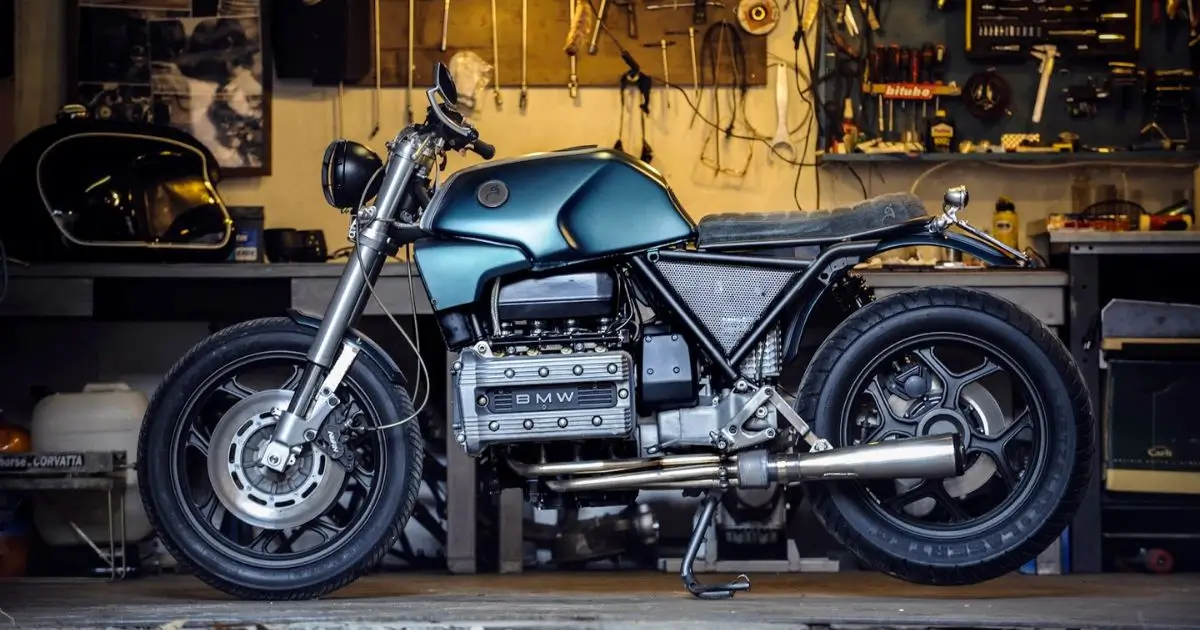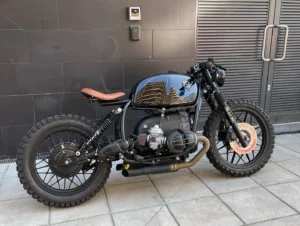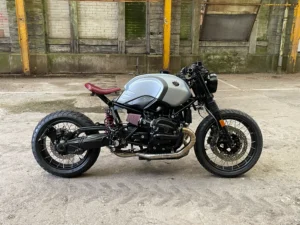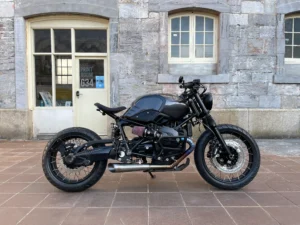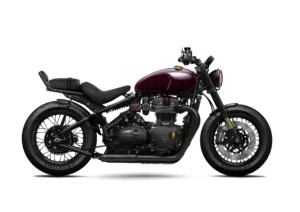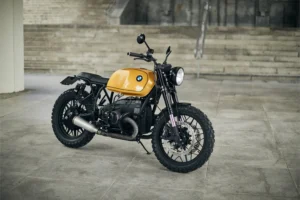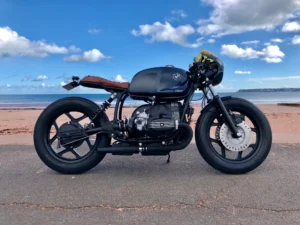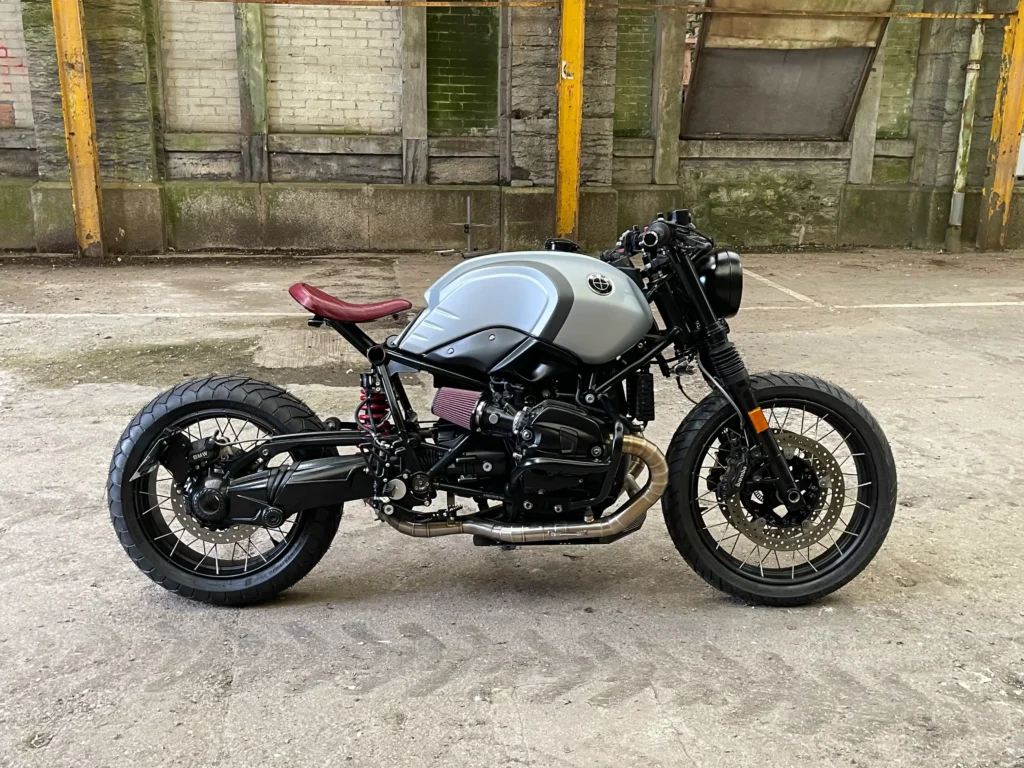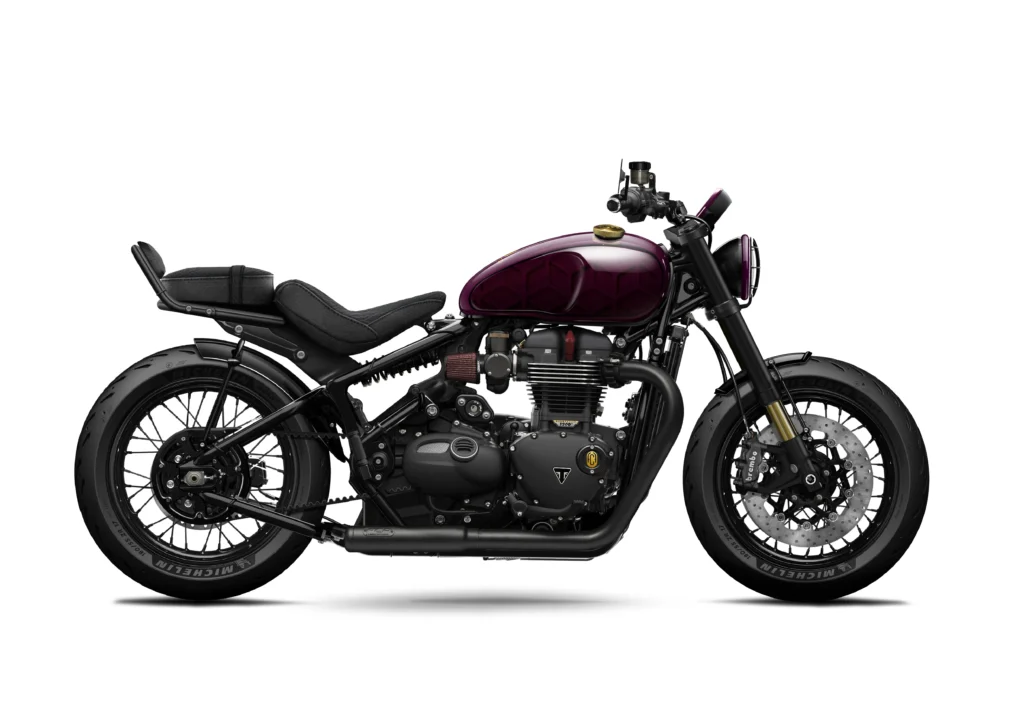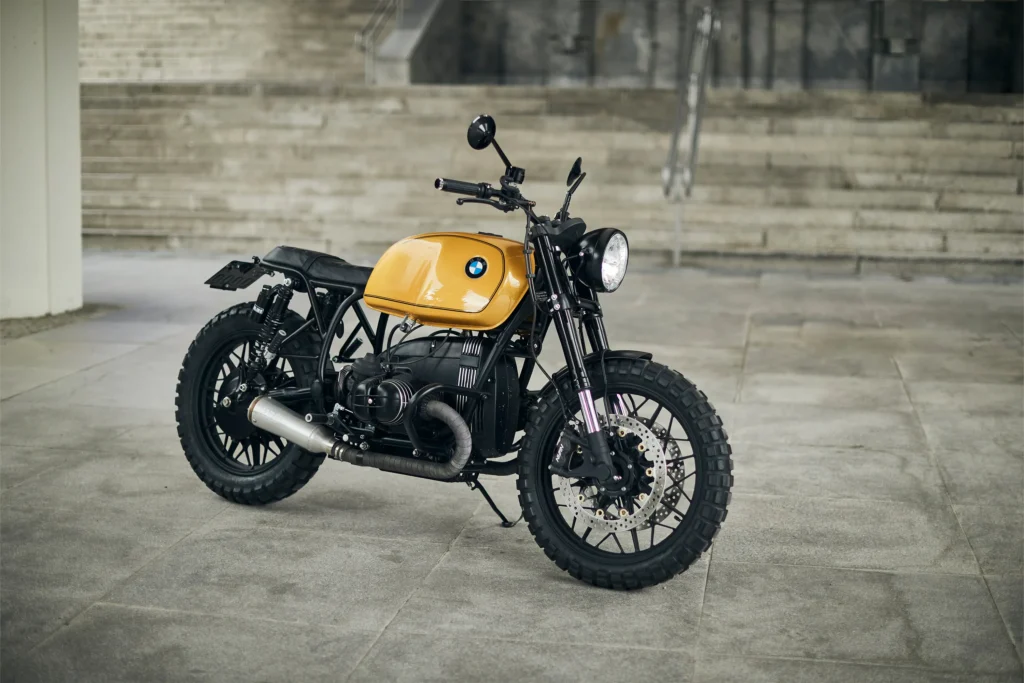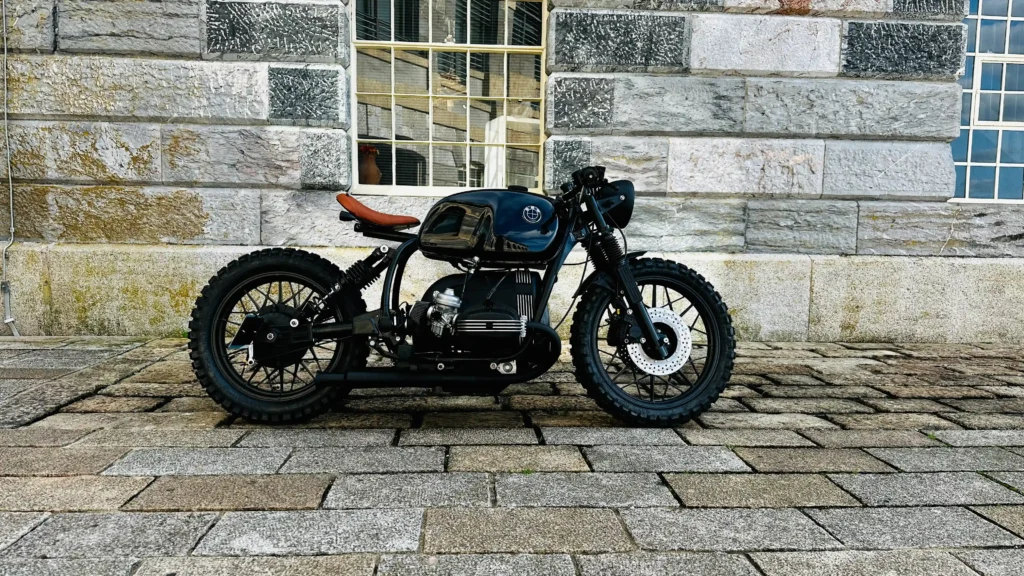Table of Contents
ToggleThe BMW K100 was never built to be a café racer. It began its life in the 1980s as a sports tourer. It was heavy, tall, and styled more for long-distance comfort than urban edge. At 240 kilograms and equipped with a bulky frame, few builders consider it a first choice for customization. But some bikes earn a second life through vision and craft.
Moto Sumisura, a custom workshop in Italy, saw that potential. Their K100 build, called “Tatanka,” is a bold rework. It turns a functional machine into a stripped, refined, and responsive piece of engineering. The transformation is not only visual. It is a technical rethink of how a heavy platform can become agile, balanced, and stylish.
Why the BMW K100 Is Unusual for Café Racer Builds

The K100’s engine is a 987cc inline-four. It produces around 90 horsepower and was considered powerful for its time. Its top speed approaches 220 km/h. Despite this, most custom builders look for something lighter. The K100 has a large radiator, angular lines, and factory fairings that don’t match the traditional café racer look.
The frame does not invite deep structural changes without complex work. This makes it a rare base for café conversions. Builders often choose models like the R80 or R nineT for simplicity and proportion. Yet, the K100 has strengths. It is reliable. It offers solid engine performance. And most of all, it presents a challenge that skilled builders find worth accepting.
Moto Sumisura’s Approach to the Tatanka Build
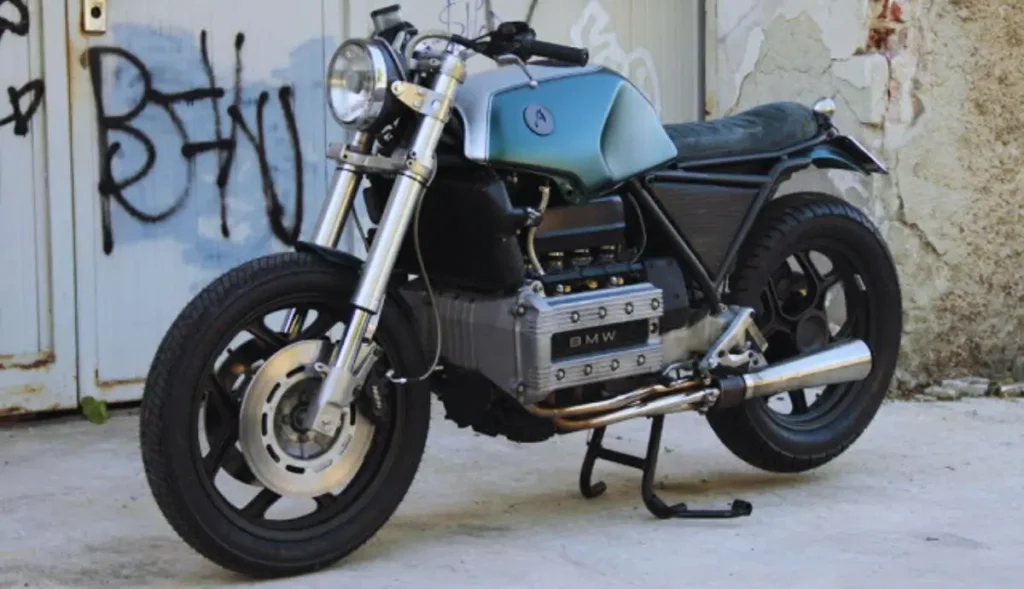
Moto Sumisura is known for creating café racers from unconventional bikes. Their goal with the Tatanka was clear. They wanted better handling and a refined design. The process started with cutting weight. The factory fairings were removed. The rear subframe was redesigned using lighter steel. It was fabricated in-house and welded cleanly to the original structure. A custom suede seat was added. This seat also holds the brake light and supports the rear fender. The goal was to make the bike visually lighter without sacrificing function.
The team avoided hiding the engine and mechanical parts behind flat panels. Instead, they used mesh inserts that reveal the structure while cleaning the lines. Every visible cable was replaced with braided lines. These were routed in matching curves on both sides of the frame. It creates a tidy, symmetrical layout that adds elegance to the build.
This is another version of the bike with a different paint job.
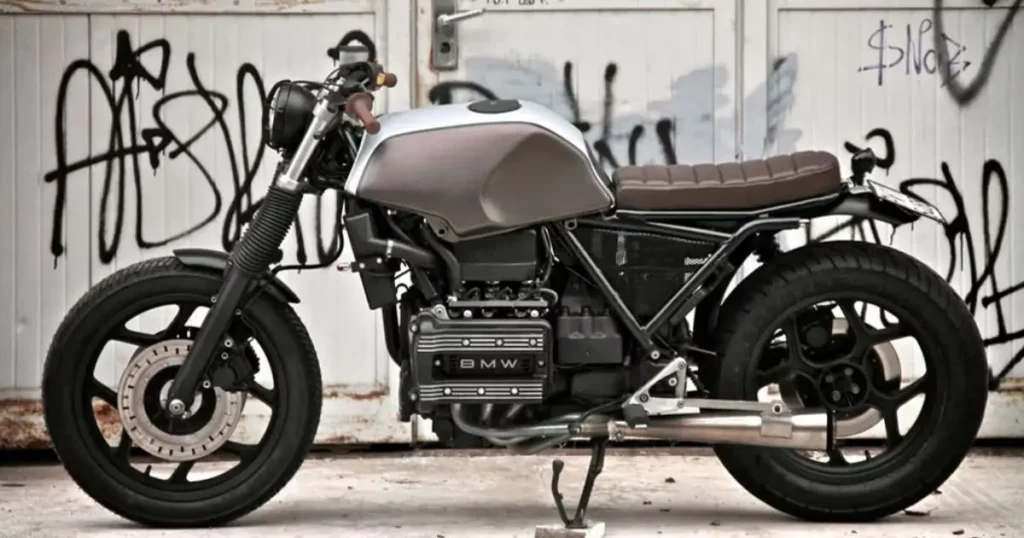
Visual Identity and Paint Choices
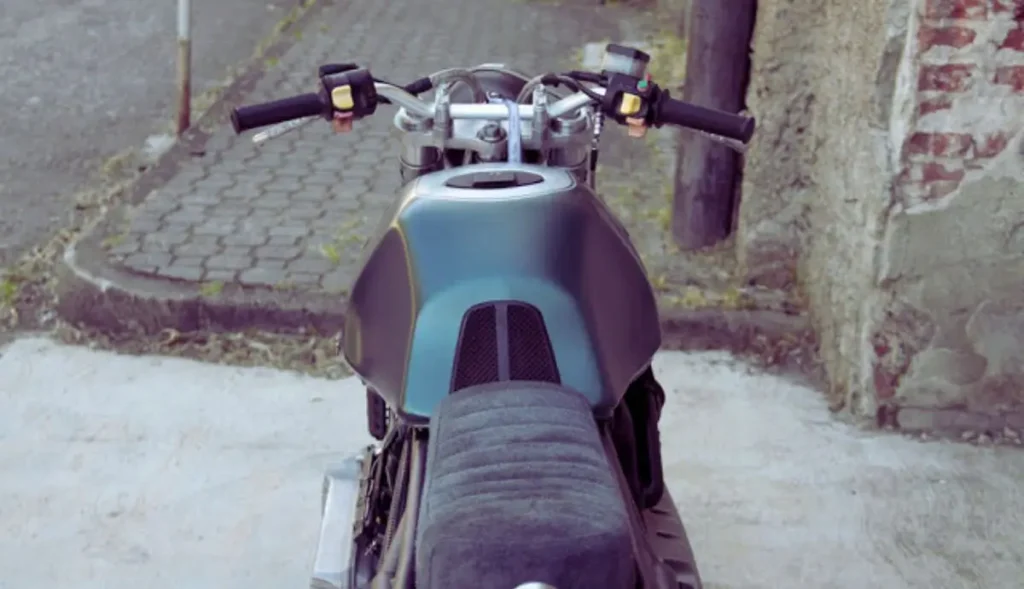
The paintwork on the Tatanka is not loud. It is controlled. The tank and fenders are finished in satin metallic green. Silver stripes run over the surface to break the monotony. The frame and wheels were painted in metallic gunmetal gray.
These muted tones match the refined goal of the build. No glossy finishes, no flashy chrome. It is industrial and tasteful. The design avoids decoration for decoration’s sake. The visual weight is concentrated in the engine and tank. This helps the build look compact, even though the original bike was far from it.
Chassis and Suspension Upgrades
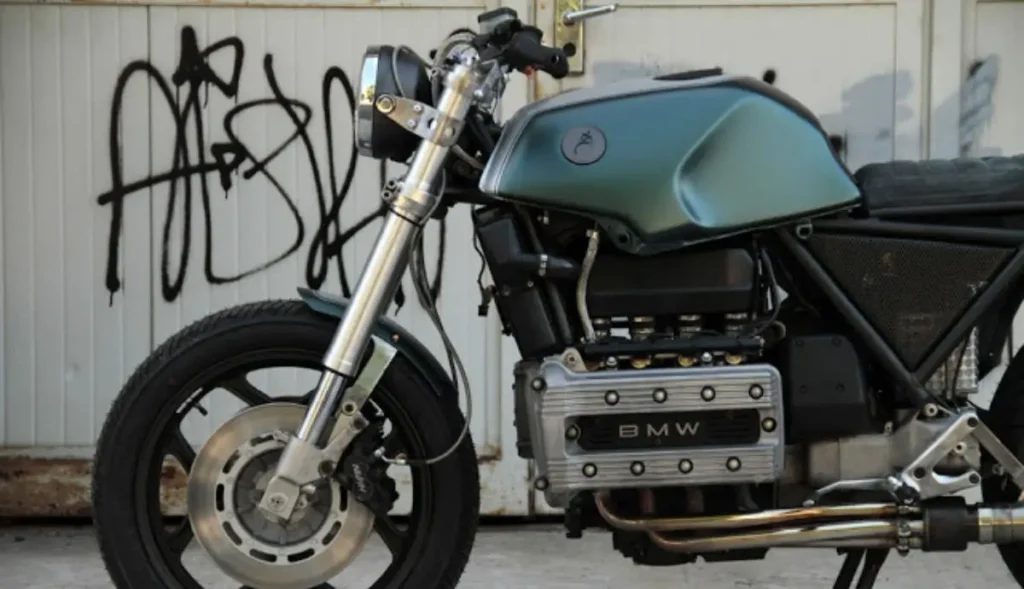
Performance was part of the goal. The stock forks were replaced with inverted forks. These provide more stiffness and control under braking. The brakes were also upgraded. Moto Sumisura used four-piston Nissin calipers for stronger stopping power. These are modern components, chosen for performance and reliability. The wheels were kept in standard size but wrapped in new rubber for improved grip. The geometry of the bike was slightly adjusted by changing the rake angle and suspension height. These small changes allow the bike to turn quicker and feel more responsive at lower speeds.
Sound and Exhaust System
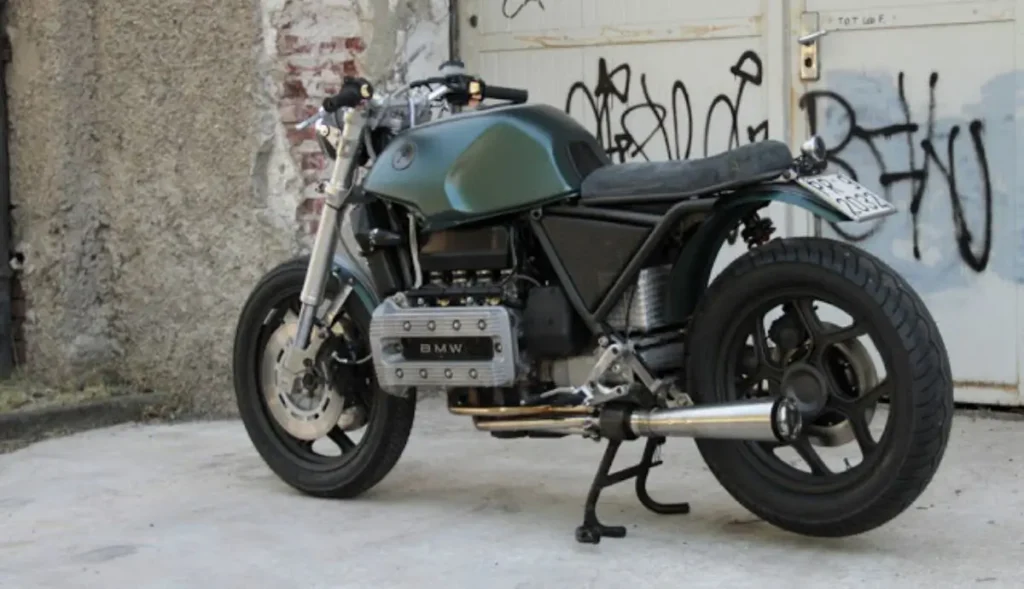
The exhaust system was replaced with a SuperTrapp unit. It is shorter and lighter than stock. The SuperTrapp improves throttle response and adds a louder, sharper sound. It transforms the character of the bike. You can hear the inline-four breathing deeper. The look is also clean. The exhaust follows the lower line of the frame without sticking out. It ends before the rear wheel, adding to the bike’s compact stance.
How the Build Rides (Based on Reported Feedback)
Riders who have tested similar K100 builds describe them as solid, fast, and better balanced after modifications. The reduced weight improves low-speed control. The front-end swap makes cornering feel tighter and more direct. The engine has a flat power curve, which means predictable acceleration across the range. While the original K100 can feel top-heavy, the Tatanka’s adjustments reduce that effect. The seat position is lower. The bars are wider. These small ergonomic changes give the rider more control in tight spaces.
Who the Tatanka Is Made For
This bike is not for someone looking for a basic weekend ride. It is for someone who values craftsmanship. It suits a rider who understands what goes into transforming a platform like the K100. This is a bike for people who like industrial looks. It is for those who want a unique motorcycle without giving up performance. The Tatanka is not minimalistic. It is deliberate. It invites attention but doesn’t shout. It is not fast in a straight line only. It is built to be responsive and stable in daily riding.
Final Thoughts
Moto Sumisura’s K100 Tatanka is a rare build. It challenges expectations. It proves that heavy bikes can be agile. It shows that unconventional platforms can become refined customs. The Tatanka is not just a visual upgrade. It is a complete reinterpretation of a forgotten classic. It brings function and form together without exaggeration. For anyone exploring the café racer world, the Tatanka offers a new reference. It reminds us that the value of a build lies not in the base model but in the vision of its maker.
Disclaimer:
This article is an independently written review and analysis inspired by Moto Sumisura’s BMW K100 “Tatanka” build. Original build details and reference images were sourced from Return of the Cafe Racers.

